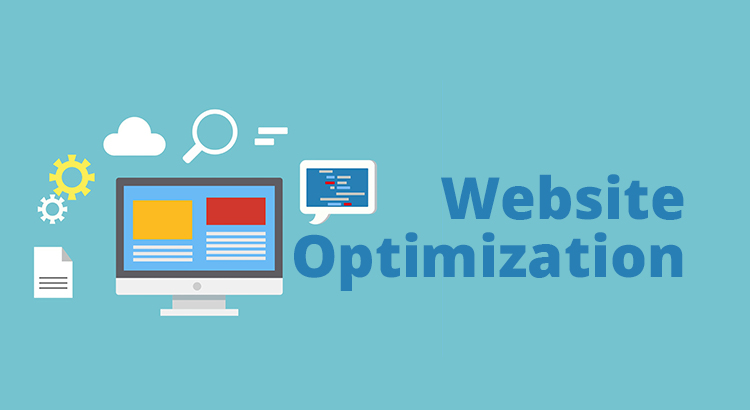Website optimization is a critical aspect of modern digital strategy. In an era where online presence defines success, optimizing your website can make or break your business. This article explores the core techniques essential for website optimization, delving into strategies, tools, costs, and the importance of this practice.
What Is Website Optimization?
Website optimization includes a set of techniques aimed at enhancing website performance, speed, and user experience. It involves refining various elements such as web design, content, images, and code to elevate functionality, visibility, and conversion rates.
Why Is Website Optimization Important?
The major benefits of website optimization are given below.
Increase Conversions
Optimized websites are more effective in converting visitors into customers or subscribers.
Related Article: Conversion Rate Optimization: Turning Clicks into Customers for Small Businesses
Improve Brand Visibility
Higher search engine rankings resulting from optimization efforts lead to increased brand visibility.
Enhance User Experience
A well-optimized website provides a seamless and enjoyable browsing experience, fostering user satisfaction and loyalty.
Useful Article: User Experience Principles: Beginner’s Guide
Boost Revenue
By attracting more traffic and improving conversion rates, website optimization directly contributes to revenue growth.
Augment Brand Reputation
A well-optimized website reflects positively on the brand, instilling trust and credibility among users.
Website Optimization Strategies
Effective website optimization tips are listed below.
1. Search Intent
Understanding user intent is paramount in optimizing website content. Advanced keyword research helps align content with search queries, ensuring relevance and visibility.
2. Technical SEO
A solid website architecture lays the foundation for effective technical SEO. Regular audits and fixes for issues like status code errors, duplicate content, and broken links optimize website performance and accessibility.
Check for status code errors and correct them
Ensure all web pages return proper HTTP status codes to avoid crawl errors and indexing issues.
Check the robot.txt for errors. Optimize if needed
Review and optimize the robots.txt file to control search engine crawlers’ access to your site’s content.
Check your site indexing via Google Search Console
Monitor site indexing status, address any indexing issues, and submit new or updated content for indexing.
Website optimization for speed
It involves techniques like image compression, browser caching, and CDN usage to enhance loading times.
Fix duplicate title tags and duplicate meta descriptions
Eliminate duplicate title tags and meta descriptions to improve search engine visibility and prevent confusion for users.
Audit your website content
Analyze website content performance using Google Analytics, and enhance or remove underperforming content accordingly.
Fix broken links
Identify and rectify broken links to improve user experience and prevent negative impacts on search engine rankings.
Submit your XML sitemap to Google via Google Search Console
Ensure all relevant pages are included in your XML sitemap and submit it to Google for efficient indexing.
3. User Experience (UX)
Prioritizing UX involves catering to user needs, ensuring usability, accessibility, and credibility. Multivariate and A/B testing facilitate continuous improvement in user experience.
Read More: Usability vs User Experience: What is The Difference?
4. Mobile Website Optimization
With the mobile-first index, optimizing websites for mobile devices is imperative. Responsive design, optimized images, and streamlined content delivery enhance mobile user experience.
5. Core Web Vitals
Google’s core web vitals focus on loading speed, interactivity, and visual stability, directly impacting user experience and search rankings. Tools like PageSpeed Insights and Lighthouse aid in measuring and improving core web vitals.
6. Schema Markup
Implementing schema markup enriches search results with enhanced descriptions, improving visibility and click-through rates. Various schema types cater to different content types, enhancing search relevance.
7. Content Marketing
Quality content remains a cornerstone of optimizing websites. Creating informative, engaging content and promoting it effectively aids in attracting and retaining users.
8. Link Building
Quality backlinks from reputable sources bolster website authority and search engine rankings. Strategies like broken link building and link reclamation help acquire valuable backlinks.
9. Test and Document Changes
Systematic testing and documentation of website changes enable informed decision-making and continuous optimization.
10. Track and Analyze KPIs
Monitoring key performance indicators (KPIs) such as conversion rates, engagement metrics, and search visibility provides insights into website performance and informs optimization strategies.
Website Optimization Tools
Google Search Console
Monitor website performance, track indexing status, and address issues to improve visibility in Google search results.
Google PageSpeed Insights
Analyze website speed and receive recommendations for optimizing performance and enhancing user experience.
Google Analytics
Track website traffic, user behavior, and conversions to gain insights for optimizing content and marketing strategies.
Google Tag Manager (GTM)
Simplify website tag management and tracking implementation to streamline data collection and analysis processes.
Rich Results Test
Validate structured data markup to enhance search results appearance and increase visibility for rich snippets.
Semrush
Conduct comprehensive website audits, keyword research, and competitor analysis to inform optimization strategies and improve search rankings.
Hotjar
Gain insights into user behavior through heatmaps, session recordings, and surveys to optimize website usability and conversion rates.
WebPageTest
Evaluate website performance by testing loading times and identifying opportunities for optimization across various browsers and devices.
How Much Does Website Optimization Cost?
The cost of website optimization services varies depending on factors like the scope of work, complexity, and the expertise of professionals involved.
While some optimization tasks can be handled internally with minimal costs, others may require investment in specialized tools or hiring external experts.
Wrapping Up
By implementing effective website optimization techniques, leveraging appropriate tools, and monitoring key metrics, organizations can enhance their online presence, attract more visitors, and drive conversions. Embracing website optimization is not an option but a necessity in today’s competitive market.


